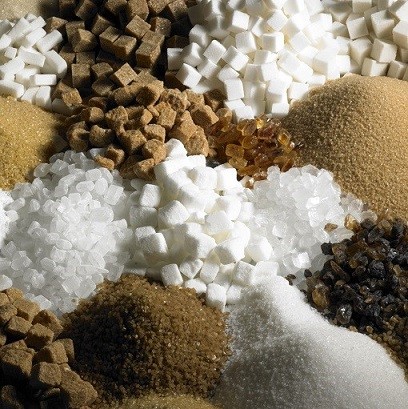 Sugar has been under attack a lot recently for the health problems it causes. For a very long time sugar was thought to be perfectly safe, but nowadays we know that it can give you diabetes, heart disease, and tooth decay.
Sugar has been under attack a lot recently for the health problems it causes. For a very long time sugar was thought to be perfectly safe, but nowadays we know that it can give you diabetes, heart disease, and tooth decay.
Importantly for us, it is also one of the very biggest causes of acne. Sugar has been linked to several of the conditions that are big causes of acne, most notably chronic inflammation and severe insulin resistance.
Before you get horrified at the thought of reducing all sugar, remember this: sugar will only harm you in large amounts. The average person with acne consumes a vast amount of sugar nowadays and that is what causes problems.
Getting moderate amounts of sugar from healthy foods will not damage your skin at all. We are well adapted to eating sugar; almost all fruit and vegetables contain sugar, even broccoli contains 1.5 grams per 100 grams.
If however, you are like the average acne patient and get a vast amount of sugar each day, then it is highly likely that sugar is one the biggest causes of your acne.
A brief history of sugar
 If we look at sugar’s history then you can easily make the case that it is behind the seemingly much worse acne of today.
If we look at sugar’s history then you can easily make the case that it is behind the seemingly much worse acne of today.
For many thousands of years sugar was only eaten in the Indian subcontinent. They were the first to extract a sugary liquid from the sugar cane plant, and the first to use it in their meals, for many centuries before it ever reached the rest of the world.
Then one day Darius, the Persian Emperor, decided to invade. His people had previously used honey as a sweetener, so he was delighted to find the Indians using sugar instead. He then took it back to the Middle East, planted it, and produced a supply for his own people.
Read Annihilate Your Acne – get the ultimate diet and clear your acne permanently!
Eventually the Middle Easterners started exporting sugar to the rest of the world and it reached Britain in about 1300AD. Like the Persians, the British had been using honey for centuries, but by about 1300 we have records that King Henry III was using sugar and it’s highly likely that other wealthy noblemen were as well.
However the average middle class person was eating almost none; because of the limited supply from the Middle East, a single pound of sugar cost $75 in today’s money.
That all changed thanks to the discovery of the Americas. Christopher Columbus had discovered the Americas and he got the smart idea of planting the sugar cane in Jamaica. The idea was a roaring success and from the mid-1600s production took off massively.
But the average middle class person still couldn’t afford it until the mid-1800s, because the UK government placed a heavy tax on sugar imports. It wasn’t until 1869, when UK PM William Gladstone repealed the sugar tax, that middle class people could finally eat sugar in their regular diet.
The sugar situation today
Once the sugar tax was repealed, average consumption of sugar steadily rose and rose and now it has reached truly staggering free for all levels.
The average person eats a vast amount of sugar from fruit juice, cake, soft drinks, cookies, chocolate, jam, coffee, candy, ice cream, sauces, breakfast cereals, commercial breads, vitamin supplements; the list is almost endless.
Sugar has slowly invaded almost every single food on the market and as a result the average Westerner’s intake has jumped up considerably.
The average American ate 153 grams of sugar per day in 2012, which is far higher than the safe limit of 50 grams. That’s only on average; there are plenty of people who eat 200, 300 grams, or maybe even more.
What does this tell us – sugar has been available for hundreds of years but it’s only during the last hundred and fifty that amounts have really increased. At the same time the rate of acne appears to have increased, so it’s highly likely that there’s a connection.
There could of course be other factors involved but nevertheless, we have our first piece of evidence that sugar causes acne. We also have a lot more evidence through the science…
Sugar leads to oily skin, blocked pores and acne
 One of the biggest problems for your skin and acne is that eating lots of sugar gives you high insulin levels.
One of the biggest problems for your skin and acne is that eating lots of sugar gives you high insulin levels.
For those of you who don’t know the insulin system, here it is: any sugar you eat will cause a rise in blood sugar. Your body then needs to convert this to energy, and to do this it uses the hormone insulin, which converts the sugar to glycogen and sends it off to your glycogen stores.
These glycogen stores are your body’s main source of energy and they are depleted whenever you exercise. If you don’t burn off enough glycogen through exercise then your stores will get full. Because they can’t accept any more glycogen they become insulin resistant, to make it harder for insulin to shuttle glycogen into them.
Recommended – the top 6 vitamins and minerals for acne-free skin
The problem is that your blood sugar remains high and your body needs to combat this. So when your body becomes insulin resistant, your body responds by pumping out ever greater amounts of insulin, to have the same effect that the previously lower amount of insulin did. That causes your insulin levels to be constantly elevated and that is one of the biggest causes of acne; high insulin levels increase sebum production and block your pores.
The problem with sugar is that when you eat too much of it, it’s very easy for your glycogen stores to get full. Basically the more sugar you eat, the more exercise you will need to get to use it up, and if you have a high sugar diet then the amount of exercise needed is almost impossible to get.
If you ever hear anyone boasting about how great their high fruit, high sugar diet is, then they almost certainly get the exercise of an Olympic athlete. Someone who cycles for eight hours a day can eat a high sugar diet without problems, nor acne, but for normal people insulin resistance is guaranteed.
So eating too much sugar is a good way to increase insulin, sebum production and thus acne.
Sugar causes inflammation to skyrocket
Eating lots of sugar triggers a big increase in inflammatory chemicals behind acne. In fact, sugar is probably the most inflammatory food ingredient of all time. High amounts of inflammatory chemicals are responsible for your acne getting big, red and swollen. Nobody is sure exactly why sugar causes inflammation but the evidence that it does is very strong:
- In this study, scientists fed 29 volunteers different amounts of sugary drinks. They found that after three weeks, those who ate the most sugar had the highest amount of C – reactive protein. C-reactive protein is a widely used indicator of inflammation. It is basically created as a by-product of inflammation in the body; therefore if there’s more inflammation your blood will have higher levels of it. The scientists actually found that when the subjects drank two cans of soda per day, their c-reactive protein increased by 107%, which is absolutely enormous. If it was caused by the sugar (which is likely) then that would make it one of the most inflammatory foods in existence.
- This study found that a diet low in fructose (a type of sugar) significantly reduced inflammatory markers.
- Scientists in this study found that high intake of fructose led to a big increase in the expression of ICAM-1, a pro inflammatory compound. They also noticed a reduction in nitric oxide and seeing as nitric oxide can be anti-inflammatory, they believe this could be behind it.
This theory is also supported by plenty of anecdotal evidence. Many people report that after eating sugary foods their acne gets a lot redder and more painful and that is a classic sign of inflammation.
Our second problem for acne is yet more insulin resistance, this time via a fatty liver.
To understand this you first need to understand the two main types of sugar: fructose and glucose. These are two types of sugar that are both found in nature. The key difference is the way that they are processed; glucose is processed by every cell in your body, whereas fructose is processed by the liver alone.
Because the liver is responsible for all the fructose you can consume, eating too much can easily damage it. In healthy circumstances, the liver will convert fructose to glycogen and store it as energy within the liver, but it only has a certain capacity to do this. If you overload the liver with a deluge of fructose then to cope with the extra demand, it converts some of the sugar to fat rather than glycogen.
This fat is stored in the liver and if the process carries on then your liver will get fattier and fattier. You then get “non-alcoholic fatty liver disease”, when your liver is full of fat and as a result works nowhere near as well.
A fatty liver can cause many problems, but the most important for us is that its ability to recognise insulin gets impaired. Your liver is one of the biggest glycogen stores in your body and it can become resistant just like any other store. Therefore a fatty liver will kick-start the usual cycle of insulin resistance followed by more insulin followed by more acne. In this study scientists analysed the health of 1307 middle aged men. They found that those with a fatty liver had a much greater incidence of insulin resistance.
Does sugar cause acne?
The answer is a very firm yes. There are two clear ways in which sugar leads to insulin resistance and good evidence that sugar can cause chronic inflammation as well. There’s also plenty of anecdotal evidence of sugar causing acne; you only have to search the internet to find countless stories on acne forums.
A classic example is people reporting that chocolate causes acne, which is actually caused by its high sugar content. Eating tons of sugar can both make your acne worse and start new acne in the first place – by increasing your sebum production and by inflaming the acne you already have.
For that reason keeping your sugar intake low is one of the best things you can do for your acne. If your diet is currently very high in sugar (you eat a lot of candy, cake, chocolate, etc.) then you will enjoy massive improvements in your acne by reducing it.
What’s the best sugar strategy for acne?
 You need to keep your sugar intake low to get rid of acne, but you should NOT eliminate it completely. If you did you would miss out on countless acne-friendly foods like fruit and vegetables. A pomegranate, for example, is quite high in sugar but is also extremely high in acne-clearing antioxidants, and as long as your intake is moderate the benefits for your acne will easily outweigh the negatives.
You need to keep your sugar intake low to get rid of acne, but you should NOT eliminate it completely. If you did you would miss out on countless acne-friendly foods like fruit and vegetables. A pomegranate, for example, is quite high in sugar but is also extremely high in acne-clearing antioxidants, and as long as your intake is moderate the benefits for your acne will easily outweigh the negatives.
In fact, almost every antioxidant rich food contains sugar; fruit and vegetables contain it, dark chocolate contains it, dairy contains it, herbs contain it, eggs contain it. The only foods that don’t contain sugar are meat, fish, and oils, foods which do have healthy qualities but certainly do not provide you with everything needed for your skin.
Your body can easily handle small amounts of sugar anyway. Every single problem that sugar causes is a result of excess consumption; your liver can process small amounts of fructose, and small amounts of sugar will only cause minimal inflammation.
The ultimate sugar strategy is simply to only get your sugar from whole foods. Never eat any added sugar and never eat any junk foods. By doing this you can minimise the sugar you don’t need and maximise the “useful sugar”, sugar that comes with many antioxidants and nutrients as well.
You do need to keep a limit on sugar from all sources; below 50 grams per day is a good level. However you can easily eat plenty of acne-friendly foods and stay within this limit.
The fruit question
The fiber in fruits also makes them quite safe for acne; when the sugar is bound up in fiber its rate of absorption is far lower. This makes the sugar less damaging and benefits the liver in particular; a fatty liver is the result of fructose being absorbed too quickly.
Other fruit products, on the other hand, do not have the same benefit. In fruit juice almost all the fiber is destroyed; therefore nothing slows down the absorption, and spike in acne.
Fruit juices are also far higher in sugar. A glass of orange juice basically contains several whole oranges and you get all the extra sugar that comes with it; one glass contains about 25 grams of sugar whereas an actual orange contains only 10.
Many people, particularly kids, are told to drink fruit juice for the nutritional benefits, which it does have, but you can easily get the same benefits by eating the whole fruit. That applies both to health and acne. If you love fruit juice then drinking it sometimes won’t harm you; the key point is to not make it a regular part of your diet.
Plus in many instances the whole fruit tastes better and is far more satisfying to eat. A glass of orange juice is gone within ten seconds whereas a whole orange will keep you entertained for ages. Also note that jam and dried fruits are too high in sugar as well.
Fruit strategy – the sugar in fruit is not generally a problem but it is still possible to overdose. To avoid this it is best to limit your fruit servings to three a day, and eat plenty of low sugar fruits.
By an excellent stroke of luck many of the low sugar fruits happen to be some of the healthiest anyway, particularly berries which are very high in antioxidants.
A good strategy would be to eat three servings per day, one low sugar fruit, one medium, and one high. Eating a handful of strawberries, an apple and a serving of pomegranate would keep your sugar intake fairly low but also give you lots of antioxidants.
One of greatest fruits ever for acne is fresh pineapple. Discover why here
There are numerous other healthy combinations and you will need to find your own one, one that is both enjoyable for you and healthy for your skin.
Fructose vs glucose
 During your quest to reduce sugar you also need to remember the big difference between glucose and fructose.
During your quest to reduce sugar you also need to remember the big difference between glucose and fructose.
Glucose is actually very important for your body; your brain runs on it and so does just about every other cell. It can have damaging effects, but they are generally limited to insulin resistance via the classic method, and inflammation due to it digesting too quickly.
Meanwhile fructose is far worse for acne. Unlike glucose it is not actually necessary for any function in the body, and its effects on your acne are much stronger.
This study shows that fructose is far better at causing insulin resistance than glucose. The scientists administered either fructose or glucose to rats for several weeks and found that by the end, the fructose rats were far more insulin resistant. Fructose actually has less of an impact on blood sugar than glucose, so this suggests that fructose has a unique way of making your cells insulin resistant.
Fructose is also the only sugar involved with a fatty liver; glucose has nothing to do with it.
Finally, fructose has been shown in studies to have unique pro-inflammatory effects. If you look at the studies referenced above you’ll see that two of them refer to fructose alone rather than any old type of sugar.
Therefore as well as putting effort into reducing your sugar intake you also need to specifically focus on fructose. You probably have no idea how to do this but it’s actually far easier than you think. There’s actually only a couple of ingredients that are throwing our fructose intake out of whack.
The first is the classic high-fructose corn syrup, an extremely common sweetener which as you can guess contains a large amount of sugar in the form of fructose.
HFCS contains about 60% fructose whereas the average piece of fruit contains glucose and fructose in a 1:1 ratio. It is an extremely common food additive in the West (because it’s cheap) and this is the biggest reason why we get too much fructose.
The only other common food with such a bad ratio is agave nectar, a sweetener that contains about 85% fructose. Gurus love this sweetener and will tell you that it’s healthy but its high fructose content means that it’s actually worse than regular sugar.
The top 7 topical treatments for clearing acne naturally
If you remove those two sweeteners, and then reduce your overall sugar to a low level, you pretty much guarantee that your fructose intake is low and safe for acne.
Also note that dairy products do not contain any fructose; their sugar is lactose, which ultimately breaks down into glucose.
Conclusion – one of the main acne villains
To summarise, sugar is pretty deadly for your skin and acne indeed. It can worsen both of the two causes behind acne (chronic inflammation, and blocked pores).
Always remember that sugar for acne is perfectly safe in low amounts though; problems such as fatty liver disease only start when sugar consumption gets too high.
It is perfectly acne-friendly to eat sugar from fruits, vegetables and other sources, as they don’t contain massive amounts and also contain acne benefits that you wouldn’t want to miss out on. Fructose is the worst type of sugar for acne, but is also safe in moderation.
The best strategy for acne is to reduce your sugar intake to under 50 grams per day. Some acne gurus may suggest even less, but then you’d miss out on skin-clearing foods like fruit.
NEXT: get the complete strategy for clearing acne naturally
Thanks for reading!
“Finally, fructose has been shown in studies to have unique pro-inflammatory effects. If you look at the studies referenced above you’ll see that two of them refer to fructose alone rather than any old type of sugar.”
But one of them refers also to glucose:
“Six 3-wk interventions were assigned in random order as follows: 600 mL SSBs containing 1)40 g fructose/d [medium fructose (MF)], 2) 80 g fructose/d [high fructose (HF)], 3) 40 g glucose/d [medium glucose (MG)], 4) 80 g glucose/d [high glucose (HG)], 5) 80 g sucrose/d [high sucrose (HS)], or 6) dietary advice to consume low amounts of fructose. … high-sensitivity C-reactive protein (hs-CRP) increased significantly after all interventions (by 4-9% and 60-109%, respectively; P < 0.05)"